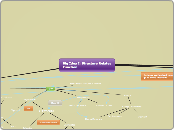по Angie Murphy 12 лет назад
310
Biology Extra Credit
The process of protein synthesis involves various cellular components and organelles working in concert. Ribosomes, both free and bound, play a pivotal role in translating mRNA into polypeptides.

по Angie Murphy 12 лет назад
310

Больше похоже на это
for secretion
Vacuoles
Lysosomes
Golgi Apparatus
modify the protein
Endoplasmic Reticulum
Signal Regocgnition particle
Signal Peptide (End of synthesized peptide -during transcription)
Receptor Protein
Synthesis Continues in ER Lumen Membrane
Signal Peptide Removed
protein can now enter
Vesicles
aid in cell motility
powered by motor proteins
which attach to microtubules or filaments
part of cytoskeleton
5 Rings - Cholesterol
Plasma Membrane
Vitamin D
Sex Hormones
Hydrophobic Tails
Hydrophilic Heads
3 Fatty Acids
Unsaturated
Trans
H bond below
Cis
H bond above
Saturated
Glycerol
Uracil - no thymine
Types
tRNA
mRNA
rRNA
Pyrimidines
Thymine
Cytosine
Purines
Guanine
Primary
Sequence of Amino Acids
Secondary
Tertiary
Hydrogen
Ionic
Hydrophobic
Quaternary
Final Coiled Protein
Disulfide Bridges - Folding
Beta Pleated Sheets
Alpha Helix
Amino Acids
Acidic
-
Basic
+
NonPolar
CH3
Polar
OH, SH, NH
Polysaccharides
Cellulose
Beta Glucose
Structure/Plant
Glycogen
Energy/Animal
Starch
Alpha Glucose
Amylopectin
Amylose
Energy/Plant
5 Carbon
C6H12O6
H2O
Chemiosmosis
FADH2
2 AcetylCoa
Glucose
NADH
ATP
Substrate-Level Phosphorylation
2 Pyruvate
Mechanical work
binding to motor proteins - ATP hydrolyzed
Transport work
phosphorylation of protein
Chemical Work
Exergonic Process
Endergonic Process
synthesis of amino acid
*need a phosphorylated intermediate
3 Phosphate Groups
Hydrolysis
- phosphate
yields ENERGY
+ H2O
Adenine
Ribose
contains terminator sequence
contains Ribosome Binding Site
during transcription
Cytoplasm
Translation
When?
after transcription
Transcription
transcription factors
Produces
Pre-mRNA
poly A tail
5' CAP
RNA Processing
Spliceosomes
mature mRNA
Where?
Nucleus
Prokaryotes
have only one ORI sequence
Eukaryotes
Have 100s of ORI Sequences
Strands Separated at ORI Sequence
Strands run Anti-Parallel
Strands Do Not Latch Back Together
RNA Primer placed down
DNA Nucleotides laid down
RNA Primers Removed
links Okazaki fragments
Strand continues